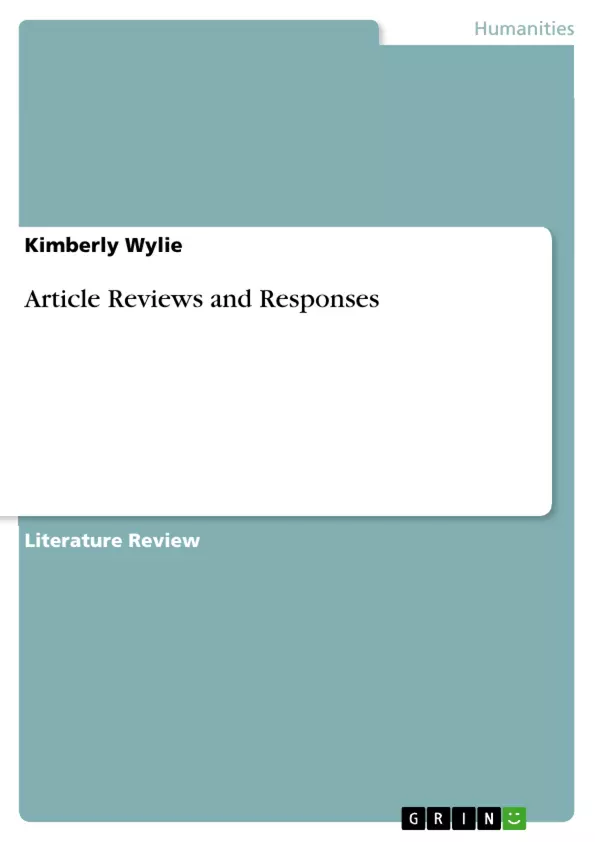This paper shall be a review and response to each of four articles discussing different issues concerning literacy. A quotation from each article shall be highlighted and discussed. An article summary, for each, will be presented. A critique will then be given. And, finally, ideas for implementing the author′s ideas into a kindergarten classroom will be described.
Inhaltsverzeichnis (Table of Contents)
- Article Reviews and Responses
- Reading aloud to children: the past, the present and the future
- Raising standards in reading and writing: Insights from England's National Literacy Strategy
- Assessing early literacy in young children
- Phonological awareness: One key to the reading proficiency of deaf children
Zielsetzung und Themenschwerpunkte (Objectives and Key Themes)
This paper aims to review and respond to four different articles focusing on various aspects of literacy. It will analyze each article by highlighting a key quotation, providing a summary, offering a critique, and proposing implementation ideas for a kindergarten classroom.
- The importance of reading aloud to children and the need for more naturalistic research.
- The impact of reading aloud to children on their literacy development.
- The history and evolution of reading instruction methods.
- The effectiveness of different literacy interventions.
- The importance of considering the specific needs of diverse learners, including deaf children.
Zusammenfassung der Kapitel (Chapter Summaries)
Reading aloud to children: the past, the present and the future
This chapter explores the history and present-day practice of reading aloud to children. It highlights the resurgence of interest in this approach in the late 1970s and the need for further naturalistic research to understand its effectiveness.
Raising standards in reading and writing: Insights from England's National Literacy Strategy
This chapter examines the English National Literacy Strategy, focusing on its approach to improving reading and writing skills. It presents a critical analysis of the program's implementation and effectiveness.
Assessing early literacy in young children
This chapter delves into the assessment of early literacy skills in young children. It discusses various methods used to assess reading readiness and provides a critical evaluation of their effectiveness.
Phonological awareness: One key to the reading proficiency of deaf children
This chapter focuses on the crucial role of phonological awareness in the reading proficiency of deaf children. It explores the challenges faced by deaf learners in acquiring language and reading skills, and discusses specific interventions to support their literacy development.
Schlüsselwörter (Keywords)
This paper explores various aspects of literacy, focusing on themes such as reading aloud to children, early literacy assessment, reading instruction, the National Literacy Strategy, phonological awareness, and literacy development in deaf children. It aims to provide a critical analysis of different research studies and their implications for educators and practitioners in the field of literacy.
- Citation du texte
- Kimberly Wylie (Auteur), 2003, Article Reviews and Responses, Munich, GRIN Verlag, https://www.grin.com/document/60907



